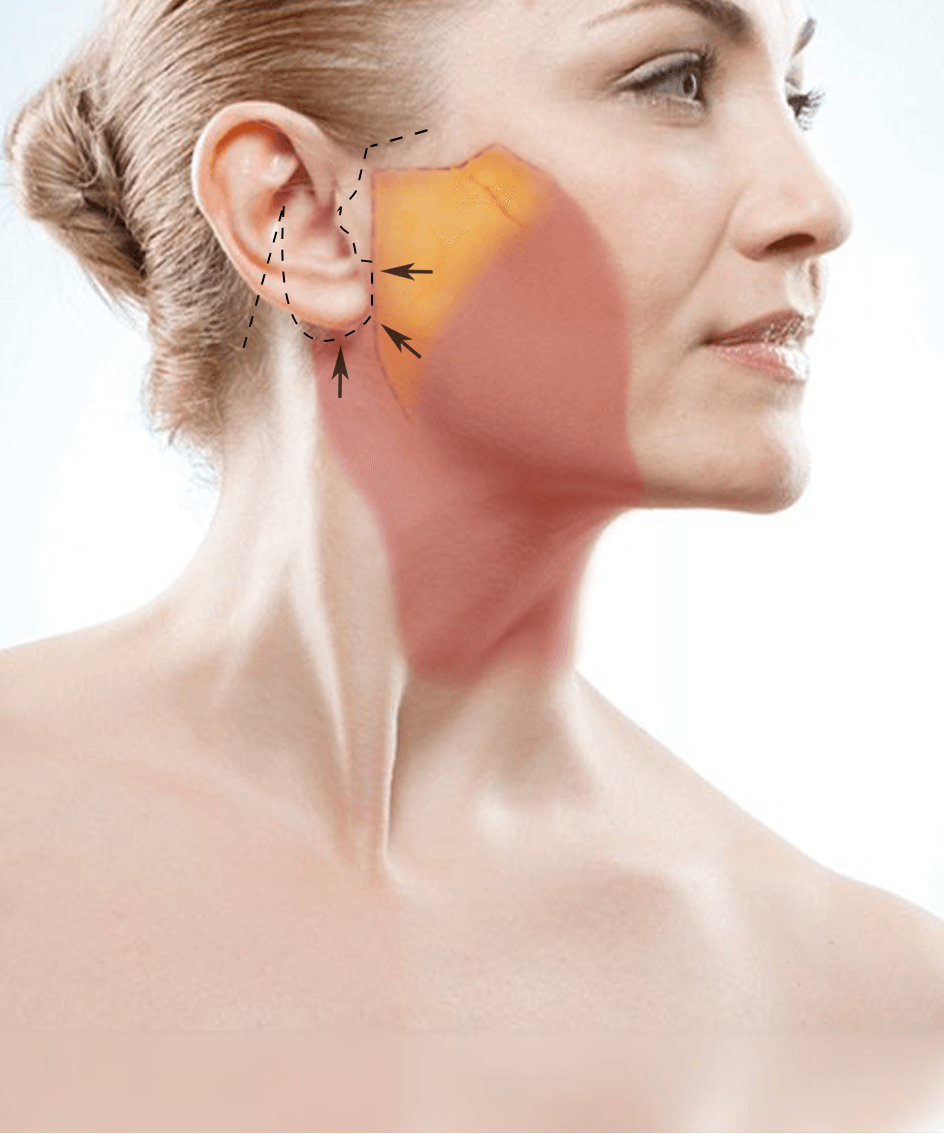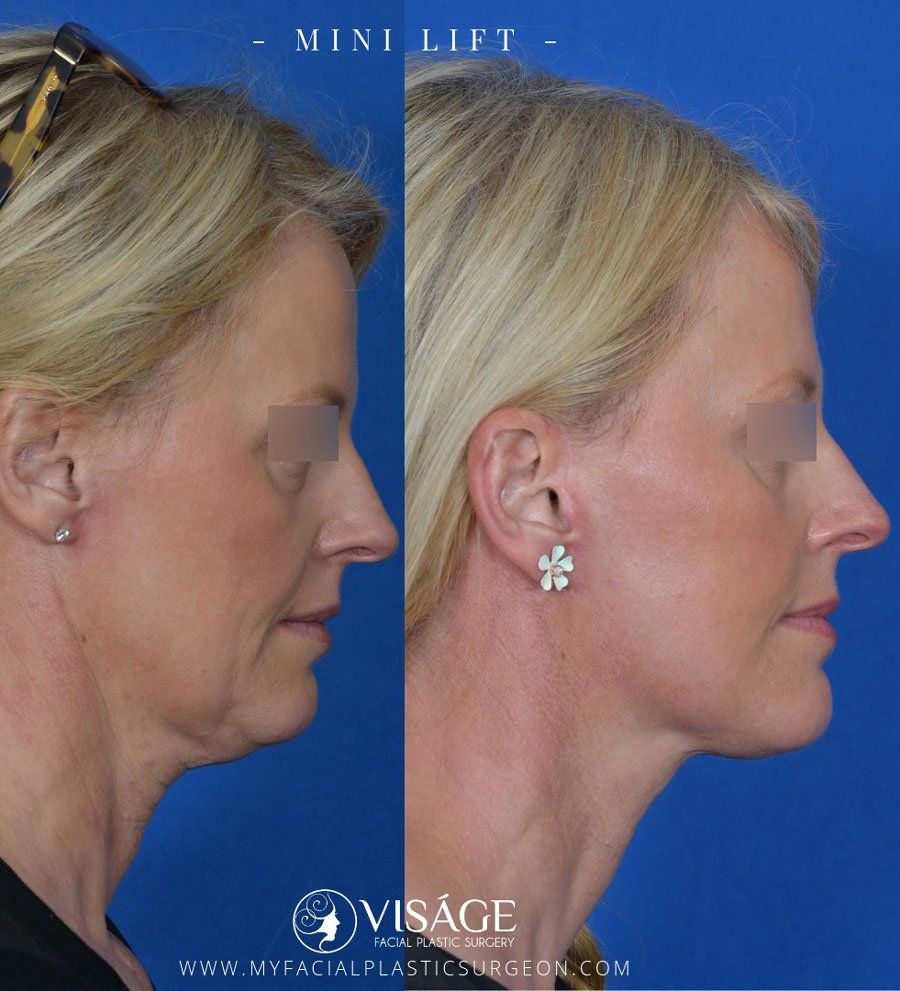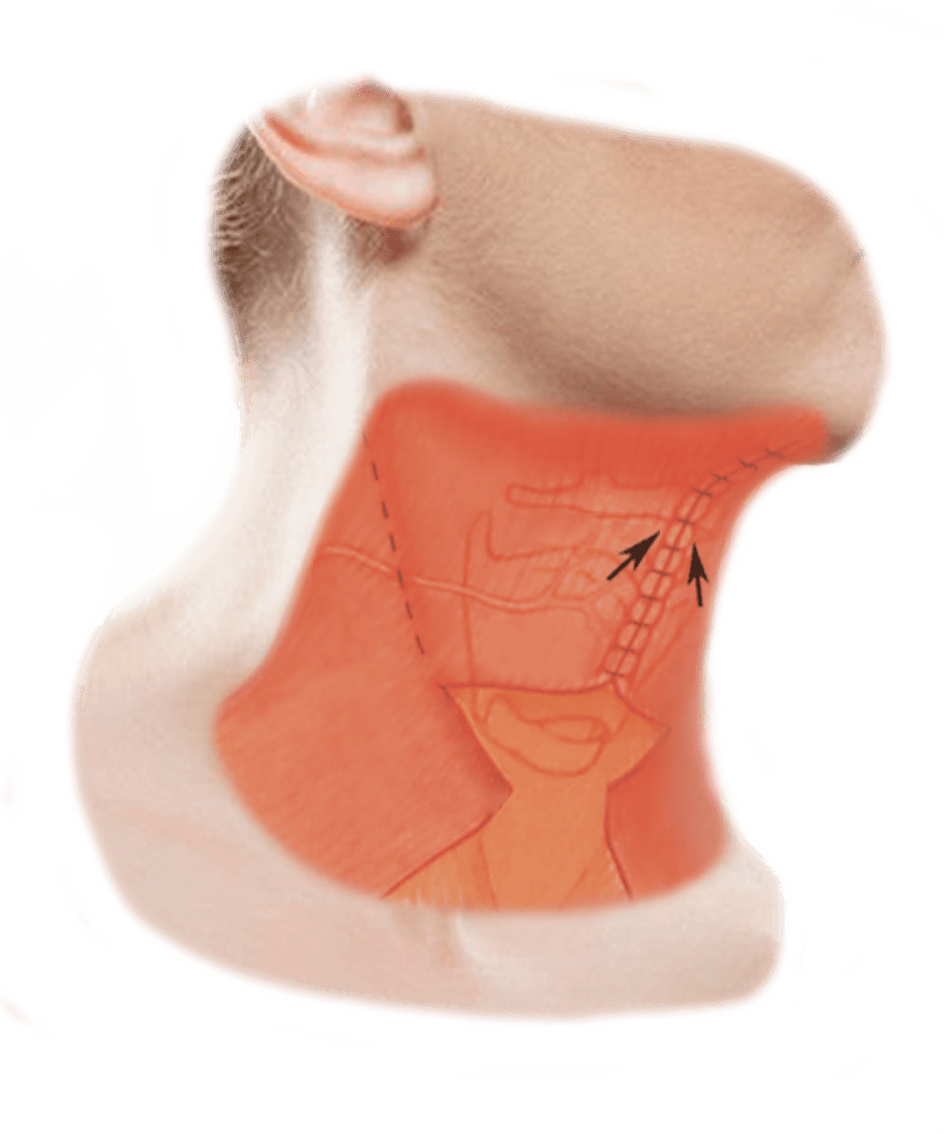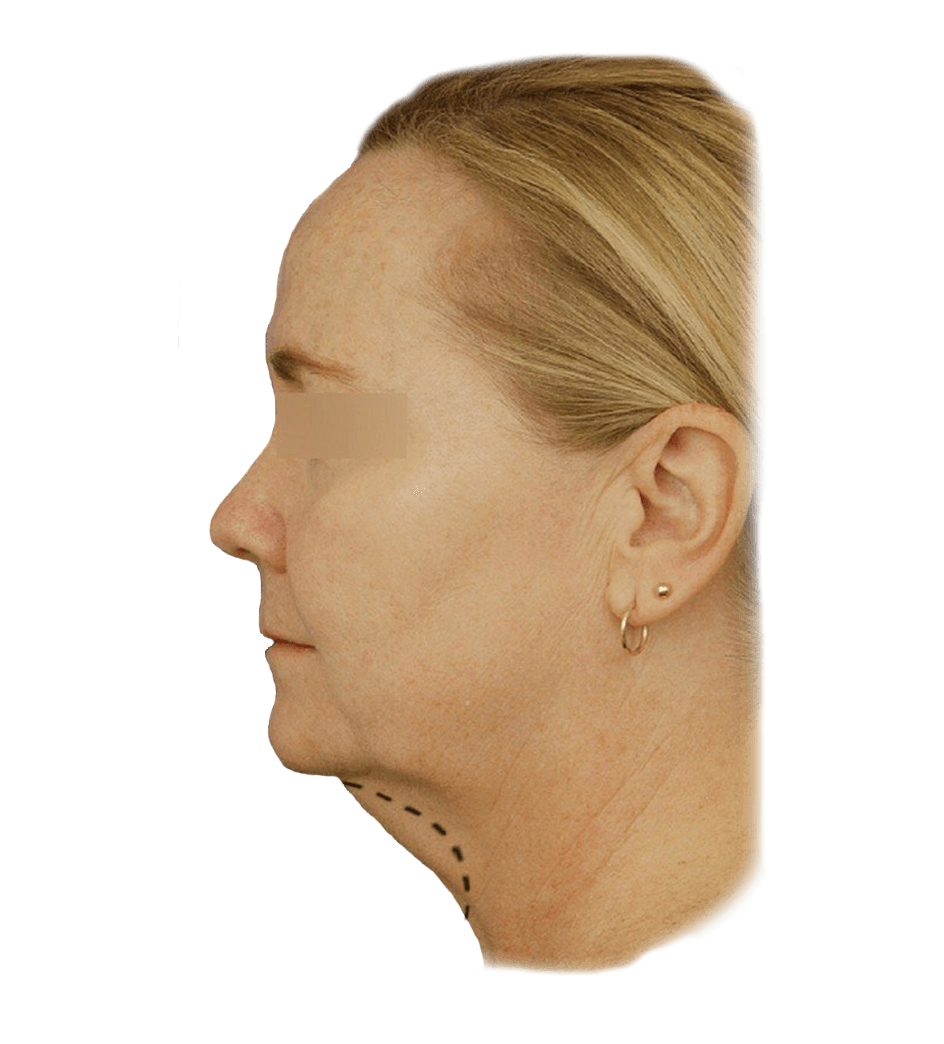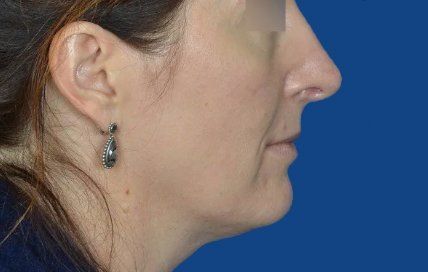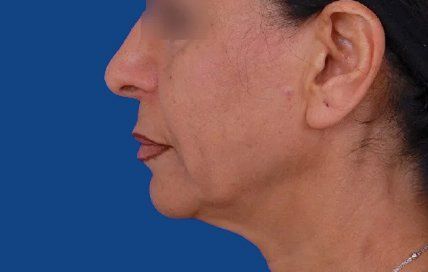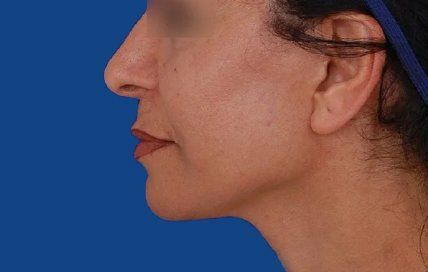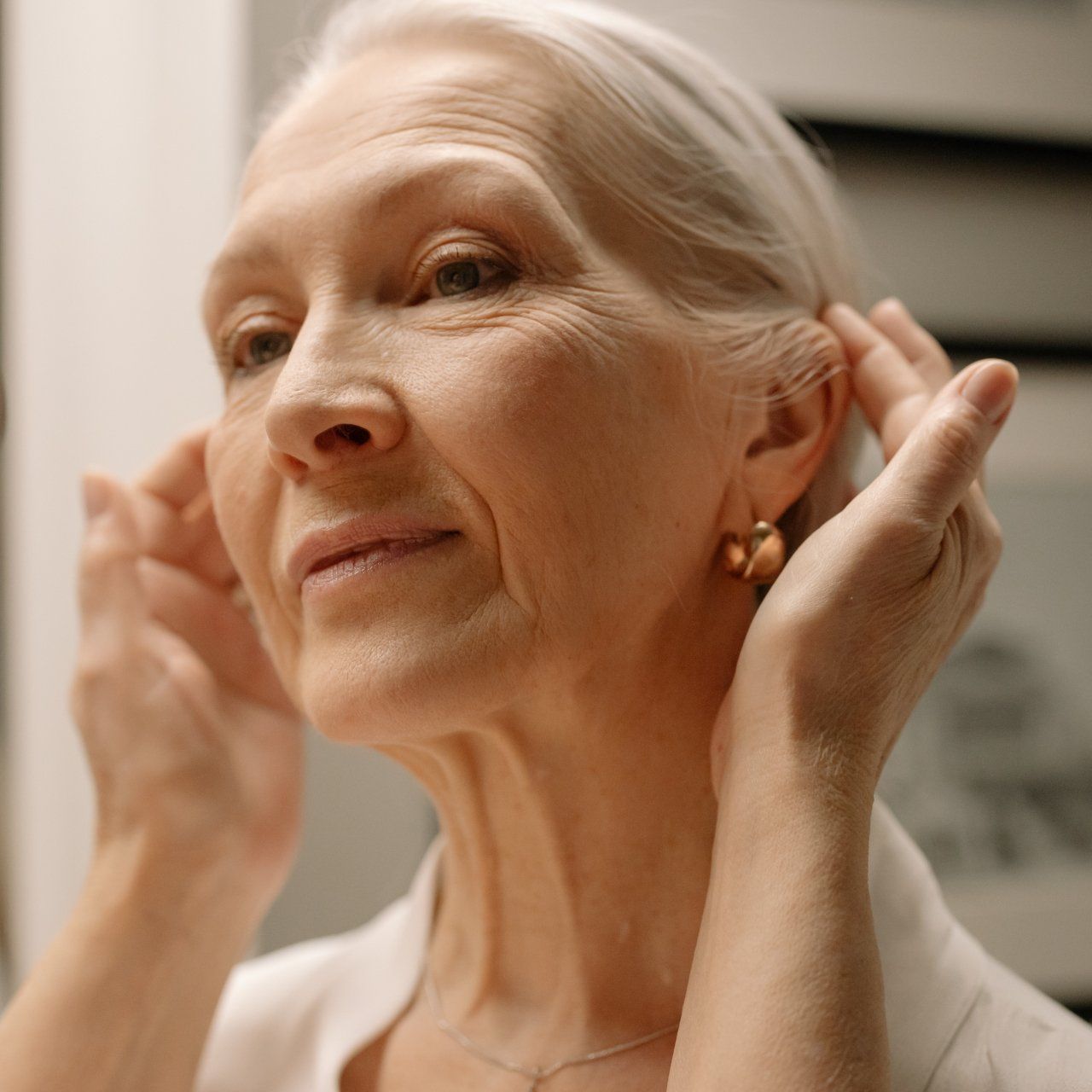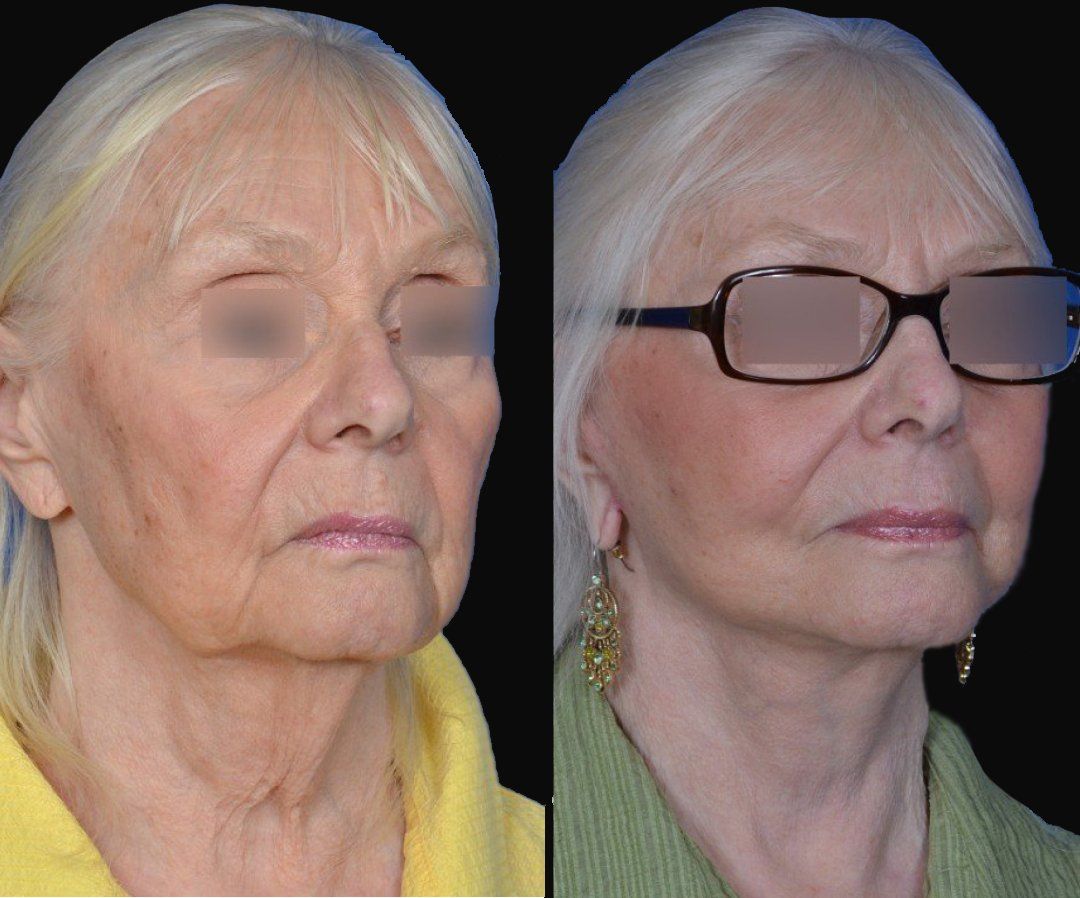Facelift & Neck Lift
A facelift (often combined with a necklift) is the gold standard procedure for improving laxity in the neckline, jawline, and cheeks. Facelift candidates often feel a disconnect between how they look and how they feel. Many desire the improvement they see when they pull their face upward in the mirror. While skin tightening lasers can offer modest improvement at best, they cannot achieve the comprehensive, long-lasting results of a surgical facelift.
At Visage, our advanced lifting technique is truly superior to other types of lifts. By using an anti-gravity direction of pull and moving all the tissue (midface, lower face and neck) as one unit, we are able to give our patients the most natural appearing result. No wind-tunnel or pulled look is acceptable.
"I had always been a runner and taken good care of myself so my body was in fairly good shape but my neck and jowls had me looking older than my years. After my procedure my face matched how I felt about myself. Even now at 60, I could easily pass for a woman in her 40's. It is a great feeling. Dr Patel's skill gave me natural look with no 'pulled too tight' look. The procedure was a breeze with minimal swelling or bruising."
"I had a face lift and blepharoplasty procedures on both eyes. I would say to look no further than Dr Patel for a surgeon whom you can trust to perform the most skilled procedures on your face. Dr Patel took pictures during the consultation and then generated photos to compare to show anticipated results. Three weeks after the procedure, it is clear that the expected results will be achieved."
“Genetics caused me to appear as though I was frowning even when I was happy and people were always asking me what was the matter. Dr. Patel gave me a facelift and the results are fabulous. People often tell me I look great, rested, and younger, yet they don't suspect I had a facelift. He also lifted my drooping upper eyelids and did liposuction on my chin. I could not be happier."
Types of Facelifts
Common Aging Concerns
We all go through a similar aging process. Genetics, sun damage, and other environmental exposures all lead to progression of fine and deep wrinkles and loss of skin tightness. Years of facial movement wear down the underlying bone: the jawline thins, the cheekbones flatten, and the eye-sockets deepen. At the same time, our tissue loses its elasticity and various muscles and fat pads begin to sag. Cheek volume descends downward contributing to dark under-eye circles, jowls, and deepening of the folds around the mouth. Lax tissue gathers below the chin, concealing the natural neckline. We can reverse these issues with a facelift, neck lift or a combination of procedures.

